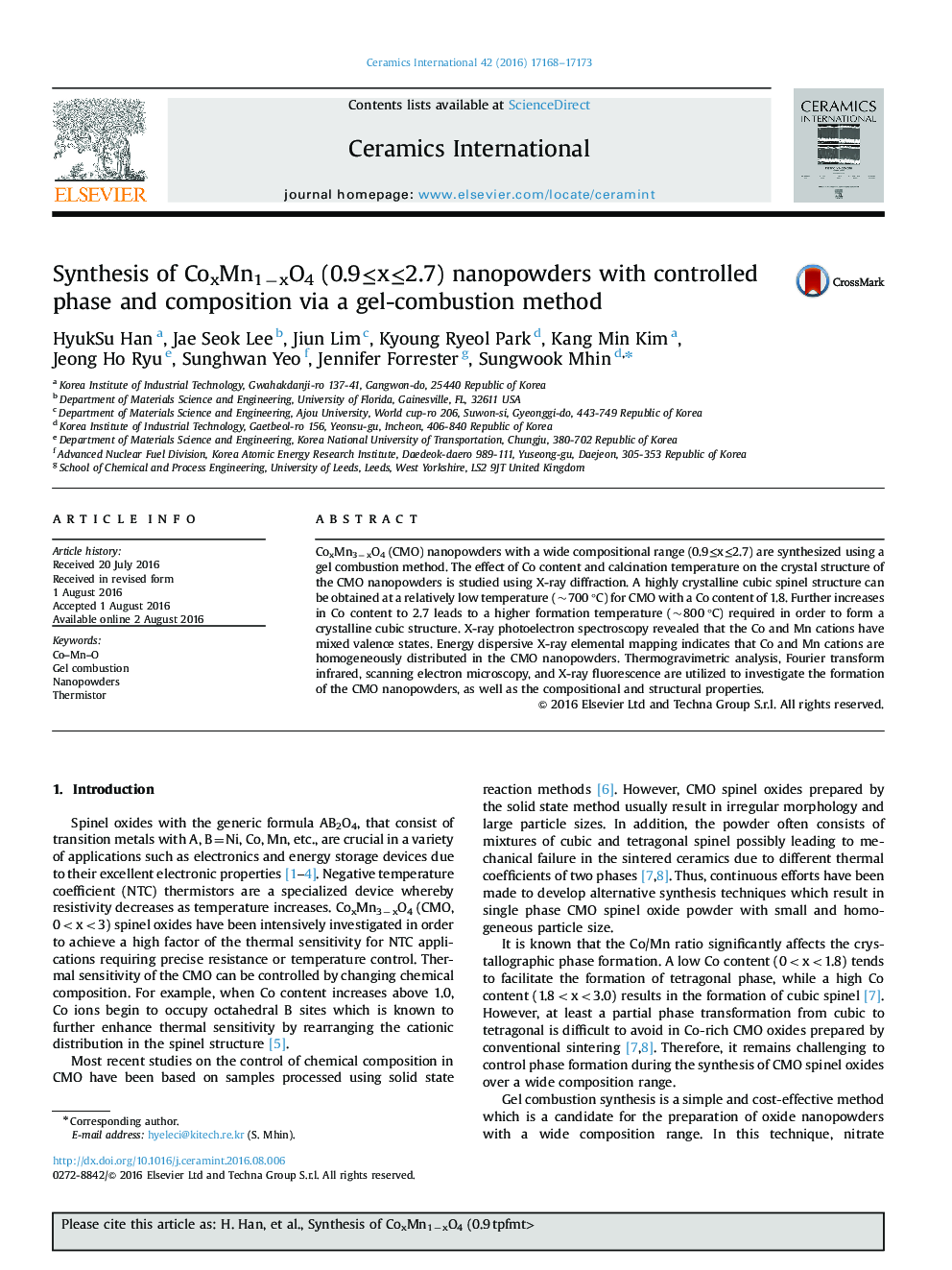| Article ID | Journal | Published Year | Pages | File Type |
|---|---|---|---|---|
| 5438780 | Ceramics International | 2016 | 6 Pages |
Abstract
CoxMn3âxO4 (CMO) nanopowders with a wide compositional range (0.9â¤xâ¤2.7) are synthesized using a gel combustion method. The effect of Co content and calcination temperature on the crystal structure of the CMO nanopowders is studied using X-ray diffraction. A highly crystalline cubic spinel structure can be obtained at a relatively low temperature (~700 °C) for CMO with a Co content of 1.8. Further increases in Co content to 2.7 leads to a higher formation temperature (~800 °C) required in order to form a crystalline cubic structure. X-ray photoelectron spectroscopy revealed that the Co and Mn cations have mixed valence states. Energy dispersive X-ray elemental mapping indicates that Co and Mn cations are homogeneously distributed in the CMO nanopowders. Thermogravimetric analysis, Fourier transform infrared, scanning electron microscopy, and X-ray fluorescence are utilized to investigate the formation of the CMO nanopowders, as well as the compositional and structural properties.
Keywords
Related Topics
Physical Sciences and Engineering
Materials Science
Ceramics and Composites
Authors
HyukSu Han, Jae Seok Lee, Jiun Lim, Kyoung Ryeol Park, Kang Min Kim, Jeong Ho Ryu, Sunghwan Yeo, Jennifer Forrester, Sungwook Mhin,
